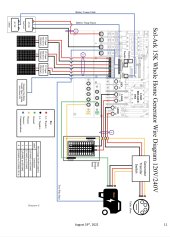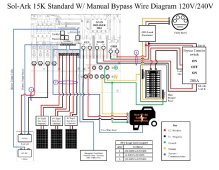6
629658
Guest
Well everyone stay away from Sol Ark takes up too much room. In my entire life I have never seem so much hate on Sol Ark. There are 3-4 people on here that just can’t stand it that Sol Ark works so well. They spend every waking moment complaining. They don’t own them and they don’t want anyone else to either.Resurrected an old post just to take a pot shot at someone? That's classy.
Was I complaining? I was stating surprise about something that isn't often talked about and in the past had been stated was built in.
The Schneider is a factory option that doesn't take up any more room.
Oz you seem to have an Ax to grind with the Missouri Wind guys too. What is your recommended system? Perhaps we should ban the mention of Sol Ark on these forums? Maybe you should approach Will about that! Your way or the highway I guess.
If we were honest, it appears this is a common behavior among AIO inverters. Never ends.






